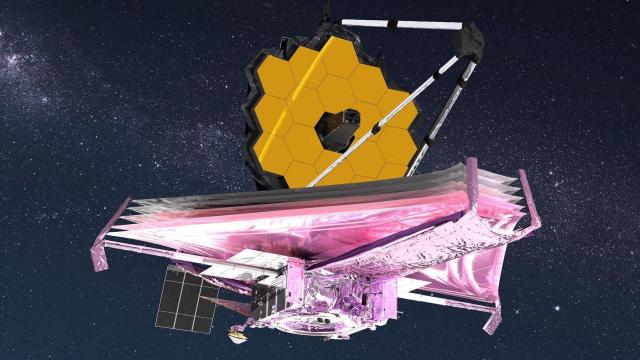In late May, the Webb Space Telescope’s tranquil commissioning process was interrupted by an uncommonly large micrometeoroid strike on one of the $US10 ($14) billion observatory’s mirrors. Now, a NASA-led analysis of the event indicates the impact was a statistical anomaly and the telescope will be less susceptible to space rock damage in the future.
Micrometeoroids are pieces of fast-moving space debris. Most micrometeoroid impacts on spacecraft are too small to be measured; according to a NASA release, Webb averages one to two measurable strikes per month.
A July report by the Space Telescope Science Institute found that the May strike caused noticeable damage to the telescope’s C3 segment, one of Webb’s 18 hexagonal mirrors. In spite of the impact, the team’s assessment was that Webb “should meet its optical performance requirements for many years.”
“Even after this event our current optical performance is still twice as good as our requirements,” said Mike Menzel, Webb lead mission systems engineer at NASA, in an agency release.
In other words, the impact didn’t affect the telescope’s ability to do its job: observing some of the oldest light in the universe, in order to better understand the first stars and the evolution of galaxies. Webb has even turned its infrared eye on our solar system neighbours.
At that time, the Webb team’s chief concern was whether the May strike was representative of more hits to come or just bad luck. The new analysis — conducted by a group of NASA experts, the telescope’s mirror manufacturer, and the Space Telescope Science Institute — indicates the latter.
After the May impact, NASA turned Webb away from the micrometeoroid avoidance zone, to shield the mirrors from the tiny space rocks. Some of the particles can zip by at 22,000 miles per hour, meaning they can pack a punch if striking a sensitive part of the telescope.
“Micrometeoroids that strike the mirror head on (moving opposite the direction the telescope is moving) have twice the relative velocity and four times the kinetic energy, so avoiding this direction when feasible will help extend the exquisite optical performance for decades,” said Lee Feinberg, Webb optical telescope element manager at NASA Goddard, in an agency release.
Webb will still be able to make observations in the direction of the avoidance zone, but it will do so at another time of year, when Webb is at a different point in its orbit and thus less susceptible to harmful micrometeoroid strikes.
More: Webb Telescope Captures Stunning Protostar ‘Hourglass’ in Space
